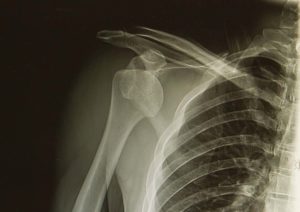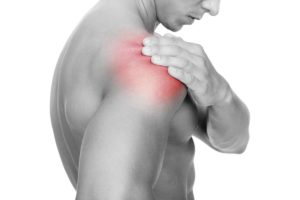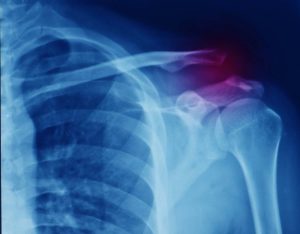
Rotator Cuff Tears
Typical Symptoms
Tears to the rotator cuff tendons in the shoulder can cause pain, limitation in movement and if significant, there can be complete loss of function. In addition, there can be night-time or early morning pain that affects sleep and rest.
Different Types of Rotator Cuff Tears
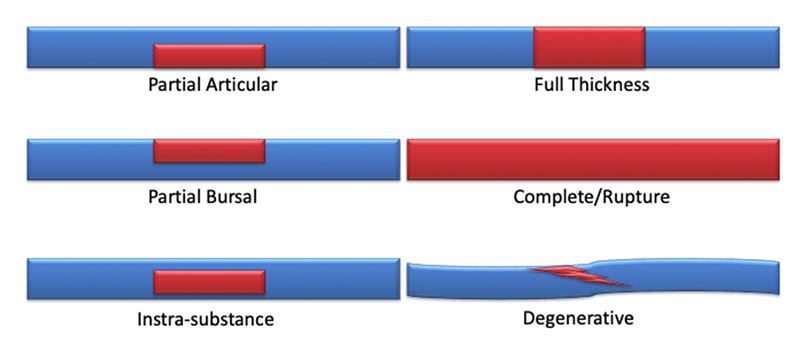
Rotator cuff tears can be quite complex, but a simple way of thinking about the injuries can be the following:
Partial Articular – where the full thickness of the tendon has not been injured and the tear is on the side of the cartilage/bone. There is usually intact tendon overlying. With this injury, there maybe pain and limitation of movement but there is usually SOME movement remaining once pain is overcome.
Partial Bursal – where the full thickness of the tendon has not been injured and the tear is on the upper aspect. Beneath this area, there maybe intact tendon. With this injury, there maybe pain and limitation of movement but there is usually SOME movement remaining once pain is overcome.
Intrasubstance – where the tear full thickness of the tendon has not been injured and the tear is within the body of the tendon. With this injury, there maybe pain and limitation of movement but there is usually SOME movement remaining once pain is overcome.
Full thickness – whether the tendon has been injured from the top to lower surface and there is essentially gapping in the tendon. With this injury, there may be pain and limitation of movement but there is usually SOME movement remaining once pain is overcome.
Complete tear or rupture – this is where the tendon is completely torn and cannot be identified on ultrasound or an MRI scan. The muscle has lost its normal attachment to the bone and hence its movement may also be lost.
Degenerative tear – this is commonly known as a wear-and-tear phenomenon due to a previous injury or overload. With time, there can be fraying or small tears within the tendon that progressively enlarge or suddenly worsen if there is a trauma.
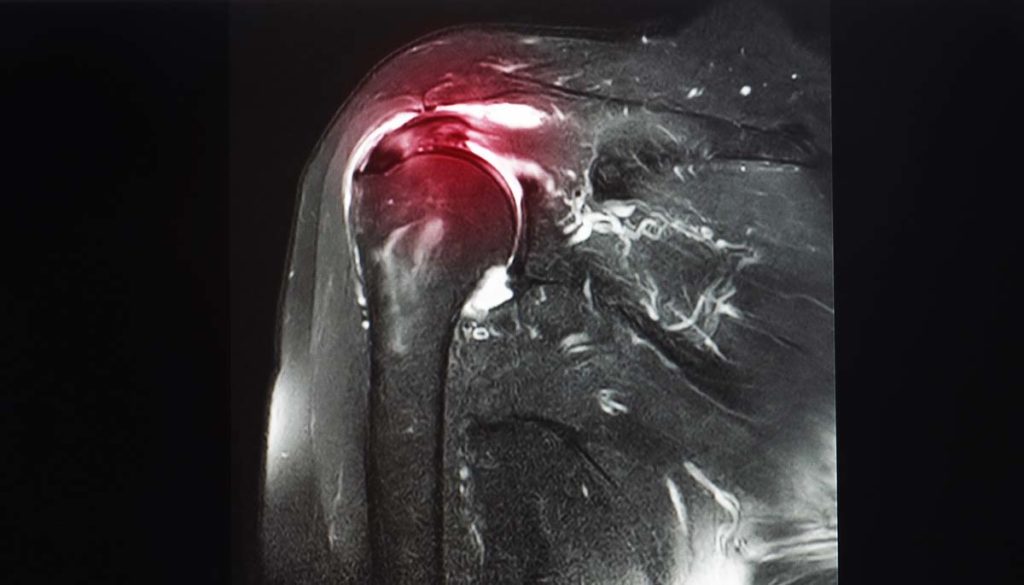
What causes it?
A tendon tear can result from a sudden stress being applied, such as from a fall, leading to an acute injury and rapid loss of function. Alternatively, it can happen on the background of degenerative (wear and tear) changes in the tendon, leading to progressive symptoms and then if there is an acute change, a sudden exacerbation. The latter could be due to bony degeneration, causing the tendon to be gradually worn away or from a chronic tendinopathy.
How can I help myself?
It is helpful to think back on when the symptoms started and how they progressed. This will help us understand what might be the mechanism of injury. Trying to keep the shoulder mobile within the limits of pain can limit it from becoming restricted and stiff, while taking regular analgesia can also help with pain symptoms.
Other treatments such as acupuncture, cupping or soft-tissue release can also help with pain symptoms.
When to seek help?
If the pain is ongoing, if it progressive, or if there is a gradual or sudden reduction in your movement and function, it would be a positive step to have this assessed. Acute changes may warrant a more urgent assessment.
What are the treatment options?
Your clinician will usually assess you with a thorough history and clinical examination and after doing so may organise an X-ray which may identify whether the pain and limitation is due to degenerative changes such as osteoarthritis of the shoulder. A same day ultrasound scan can help identify if there are tears to the tendons.
Rehabilitation with a physiotherapist and pain management with medication or treatments such as acupuncture, will form the core steps in terms of management. However, if this is not helping or if significant/subtle tendon changes were noted on the ultrasound, an MRI can be help define the anatomy more clearly, before other treatments such as ultrasound guided cortisone/PRP injections or a surgical consultation is sought.
